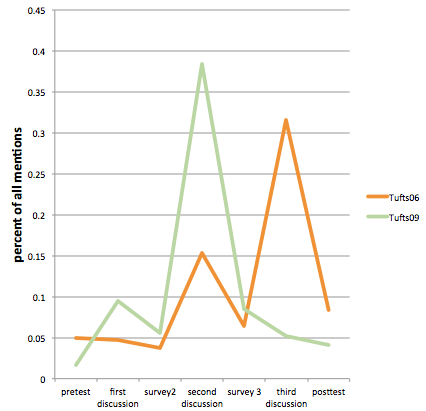The 6-page article, Beyond Deliberation: A Strategy for Civic Renewal (2014), by Peter Levine was published in the Journal of Public Deliberation: Vol. 10: Iss. 1. Many well-organized deliberative spaces exist in the US and also, is still small activity compared to the energy used to purposely manipulate public opinion. Levine talks about how civic society has changed from organizing people en masse via churches, unions, and political parties; to a new civic society, where fewer people are organized in these traditional groups and even fewer funders are willing to put money into the engagement needed. There needs to be an active effort to expand the opportunities for discussion and deliberation within groups and organizations that are not-neutral but come together to drive change.
Find the PDF available for download from the Journal of Public Deliberation site here.
From the article…
I would not claim that our traditional civic organizations were maximally deliberative, in that they tried to promote ideologically diverse conversations that were civil and inclusive. They had agendas and they were in conflict with various opponents. My own political theory would assign some value to deliberative values—but only some. I think mobilization, contention, and negotiation are also essential elements of a democracy. Further, an important byproduct of participation in groups like churches, parties, and unions was recruitment into the broader public sphere in which individuals of diverse backgrounds and opinions exchanged ideas.
The old civil society recruited people by offering them personal (non-civic) benefits and then gave them motivations and support to talk about political issues. Its leaders were dependent on grassroots members for dues and votes, and hence accountable to the members.
In contrast, the new civil society is all nonprofit and voluntary. It asks people to participate for explicitly civic reasons. Very few do. And it depends on the grace of powerful institutions, funders and agencies.
Deliberative democracy is the theory that citizens can and should come together to talk and form reasonable public opinions. I think this theory identifies some genuine values, but there are other values to consider as well. Further, deliberative democracy presumes the unrealistic psychological premise that people will choose to deliberate. And it makes the naïve political assumption that institutions will choose to support public deliberations. These assumptions are most egregious when deliberation (talking and listening) is divorced from membership and relationships, from work and common action. A more plausible strategy involves connecting moments of deliberation to ongoing struggles, which is certainly the goal of Study Circles and similar practices that straddle the border between deliberation and community organizing.
I would look well beyond even those examples. If we want opportunities for discussion and reflection about public issues, then we will also find deliberative impulses in efforts to preserve and enhance common resources (such as wetlands and forests); in volunteer service groups that decide where and how to work; in civics classes, from kindergarten through graduate school; in partisan, ideological, and faith-based movements that have some interest in discussion; in grassroots public media efforts; and in local partnerships built around community development corporations, hospitals, and colleges. Like unions, churches, and parties, these are not primarily vehicles for deliberation. Only a small proportion see themselves as politically neutral; many are adversarial. Few see themselves as primarily involved in talking and listening. Not many share the widespread preference in deliberation for a “positive atmosphere” and “good emotional interaction” (Mansbridge et al 2006). Instead, many are angry.
But they have a common interest in confronting the forces and decisions–often intentional–that have sidelined active citizens in countries like the US. They have a common reason to challenge laws and policies, funding streams, educational priorities, and media coverage that ignore or marginalize citizens. They are all threatened by the rising signs of oligarchy in the United States. Collectively, they have considerable resources with which to fight back, both cash and people. It is time for us to begin to stir and organize–not for deliberation, but for democracy. Download the case study from the Journal of Public Deliberation here.
Download the full article from the Journal of Public Deliberation here.
About the Journal of Public Deliberation
 Spearheaded by the Deliberative Democracy Consortium in collaboration with the International Association of Public Participation, the principal objective of Journal of Public Deliberation (JPD) is to synthesize the research, opinion, projects, experiments and experiences of academics and practitioners in the emerging multi-disciplinary field and political movement called by some “deliberative democracy.” By doing this, we hope to help improve future research endeavors in this field and aid in the transformation of modern representative democracy into a more citizen friendly form.
Spearheaded by the Deliberative Democracy Consortium in collaboration with the International Association of Public Participation, the principal objective of Journal of Public Deliberation (JPD) is to synthesize the research, opinion, projects, experiments and experiences of academics and practitioners in the emerging multi-disciplinary field and political movement called by some “deliberative democracy.” By doing this, we hope to help improve future research endeavors in this field and aid in the transformation of modern representative democracy into a more citizen friendly form.
Follow the Deliberative Democracy Consortium on Twitter: @delibdem
Follow the International Association of Public Participation [US] on Twitter: @IAP2USA
Resource Link: www.publicdeliberation.net/jpd/vol10/iss1/art19/

 A
A




